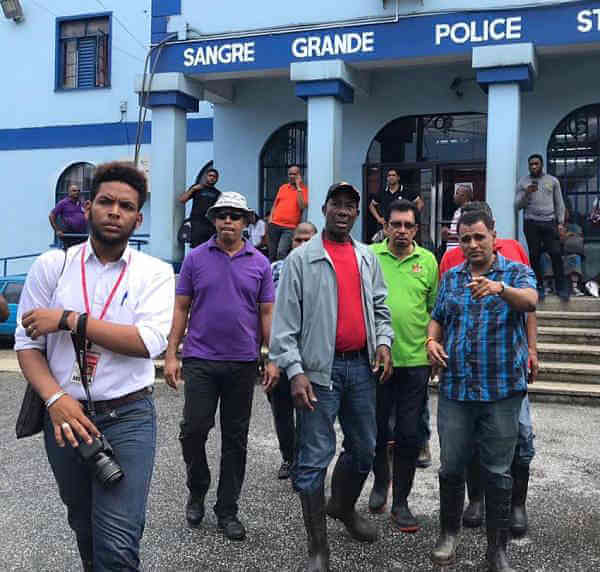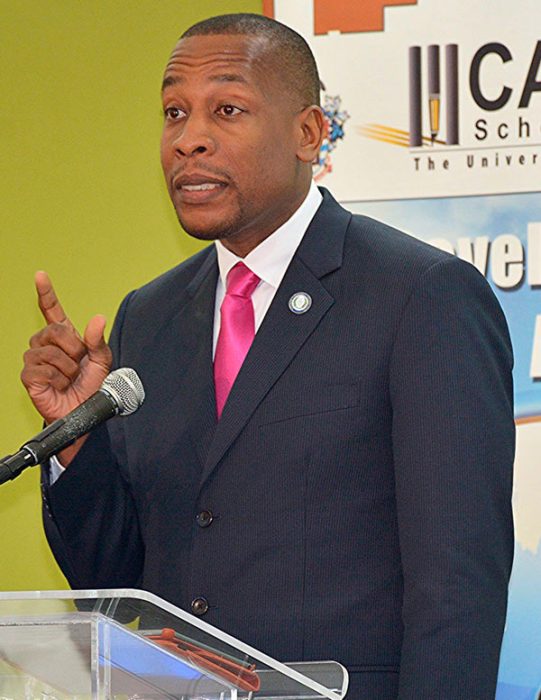Timothy Antoine, Eastern Caribbean Central Bank governor this month took over leadership of the Caribbean Catastrophe Risk Insurance Facility amidst a challenge to widen disaster insurance for a natural calamity-prone zone.
Antoine became Chairman as of July 1, replacing retired chief executive Milo Pearson, at this special purpose disaster relief fund which was set up by regional governments since Hurricane Ivan in 2004 with the intention of providing insurable financial relief for hurricanes and earthquakes originally, but has in recent times added coverage of damage owing to excessive rainfall among its portfolio of insurable financial products.
CCRIF stated that during Antoine’s tenure, it will “place a strong focus on scaling up the Facility.”
According to the Cayman Islands-based organization, “this focus has been given added impetus as governments and citizens in the region have witnessed first-hand the impacts of extreme geophysical and climate events – most notably Hurricanes Matthew, Irma and Maria in the past two years – and have been encouraged by CCRIF’s rapid response and payouts”.
CCRIF has taken pride in its rapid response to disasters in the region with last year being a shining example when payments were quickly issued in September after passage of the Hurricanes.
Within a short period after being damaged from the storms, to the Turks and Caicos Islands received US$14,864,633; Antigua and Barbuda cashed in US$6,794,875; Anguilla, US$6,687,923; St Kitts and Nevis, US$ 2,294,603; the Bahamas, US$397,598; and Haiti US$162,000.
Additionally, US$19,294,800 went to Dominica.
The payments had been made with there being still two months of the 2017 hurricane season left.
Since it began payouts some 10 years ago CCRIF was quietly shining a bright light in the continuous darkness of massive storms and catastrophes along with threats of these disasters that bedevil the Caribbean from June to November of each year.
The Facility recently stated that over the time of its insurance compensation it, “made payouts of a little more than US$100 million to 12 of its 17 member countries – all within 14 days of the event.”
Payments crossed the $100 million mark with the disbursements in September 2017.
But the test for the ECCB Governor is to steer this organization into spreading its compensation capacity as the current insured payout amounts do not cover much of the cost of recovery of disaster-struck Caribbean territories, especially those who are repeated victims of Hurricanes that are a threat for six months of every year.
This Caribbean-owned facility had itself has urged members “not to view the organization as a silver bullet for managing disaster risk but rather a complementary tool in addressing the much broader issues of disaster management and climate change adaptation within the state.”
In issuing a similar warning to governments of the region Caribbean Development Bank Director of Economics, Dr Justin Ram, has said that despite CCRIF being critical and relevant to the territories there is a need for individual countries to strengthen their financial management in preparation for disasters.
“Given the vulnerabilities to natural disasters and how this has contributed to debt accumulation, it is important for countries to use revenue windfalls to set up contingency funds or sovereign wealth funds, so as to reduce the debt burden and ensure greater economic and social resilience,” he said.
Antoine now has to employ financial acumen similar to what he practices at the ECCB to grow this facility even as member territories are told to look elsewhere for additional catastrophe risk insurance coverage.


























